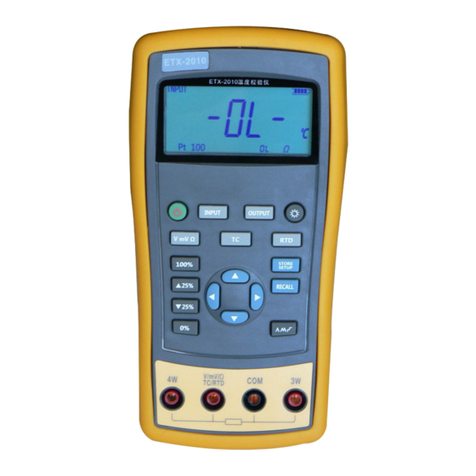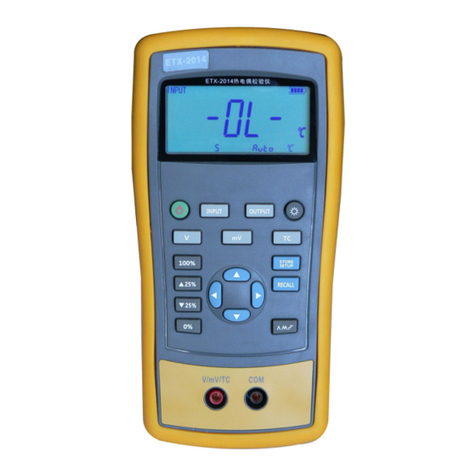
Contents
1. Safety.....................................................................................................................................1
2. Instruction on safety............................................................................................................ 1
3. Introduction........................................................................................................................... 1
4. Overview of front panel.......................................................................................................2
4.1 Front panel..................................................................................................................2
4.2 User’s interface..........................................................................................................3
4.2.1. Measurement interface................................................................................ 3
4.2.2 System settings interface............................................................................. 4
4.3 Test port.......................................................................................................................4
5. Operation instruction........................................................................................................... 4
5.1 Startup and shutdown...............................................................................................4
5.2 Selection of parameter............................................................................................. 5
5.2.1 Selection of frequency...................................................................................5
5.2.2 Selection of level............................................................................................ 5
5.2.3 Selection of internal bias...............................................................................6
5.2.4 Selection of range.......................................................................................... 6
5.2.5 Selection of measurement speed................................................................7
5.2.6 Selection of L/C/R/Z main parameters....................................................... 7
5.2.7 Selection of X/D/Q/θ/ESR secondary parameters................................... 7
5.2.8 Selection of tolerance....................................................................................7
5.2.9 Selection of nominal...................................................................................... 8
5.2.10. Selection of equivalent...............................................................................8
5.3. DCR mode.................................................................................................................8
5.4. Electrolytic capacitance mode................................................................................8
5.5. Relative mode........................................................................................................... 9
5.6. Reading hold mode (HOLD)...................................................................................9
5.7 Data recording function (maximum, minimum, average)....................................9
5.8 Comparator function............................................................................................... 10
5.9 Correction function..................................................................................................10
6. Rapid application guide.................................................................................................... 10
6.1 Resistance measurement...................................................................................... 11
6.2 Capacitance measurement....................................................................................12
6.3 Inductance measurement...................................................................................... 13
6.4 Impedance measurement...................................................................................... 14
7. Telecommunication............................................................................................................14
8. Instrument parameters......................................................................................................17
8.1 General parameters................................................................................................17
8.2 Measurement accuracy..........................................................................................17
8.3 Accuracy indicator................................................................................................... 21
8.3.1. Accuracy indicator 1(ET433).....................................................................21
8.3.2 Accuracy indicator 2(ET432/ET431).........................................................22
8.3.3 Accuracy indicator 3(ET430 and ET430B).............................................. 27
8.3.4 Accuracy indicator 4(DCR)..........................................................................31
9. Maintenance....................................................................................................................... 31
9.1. Overhaul.................................................................................................................. 31
9.2 Clean......................................................................................................................... 31

































